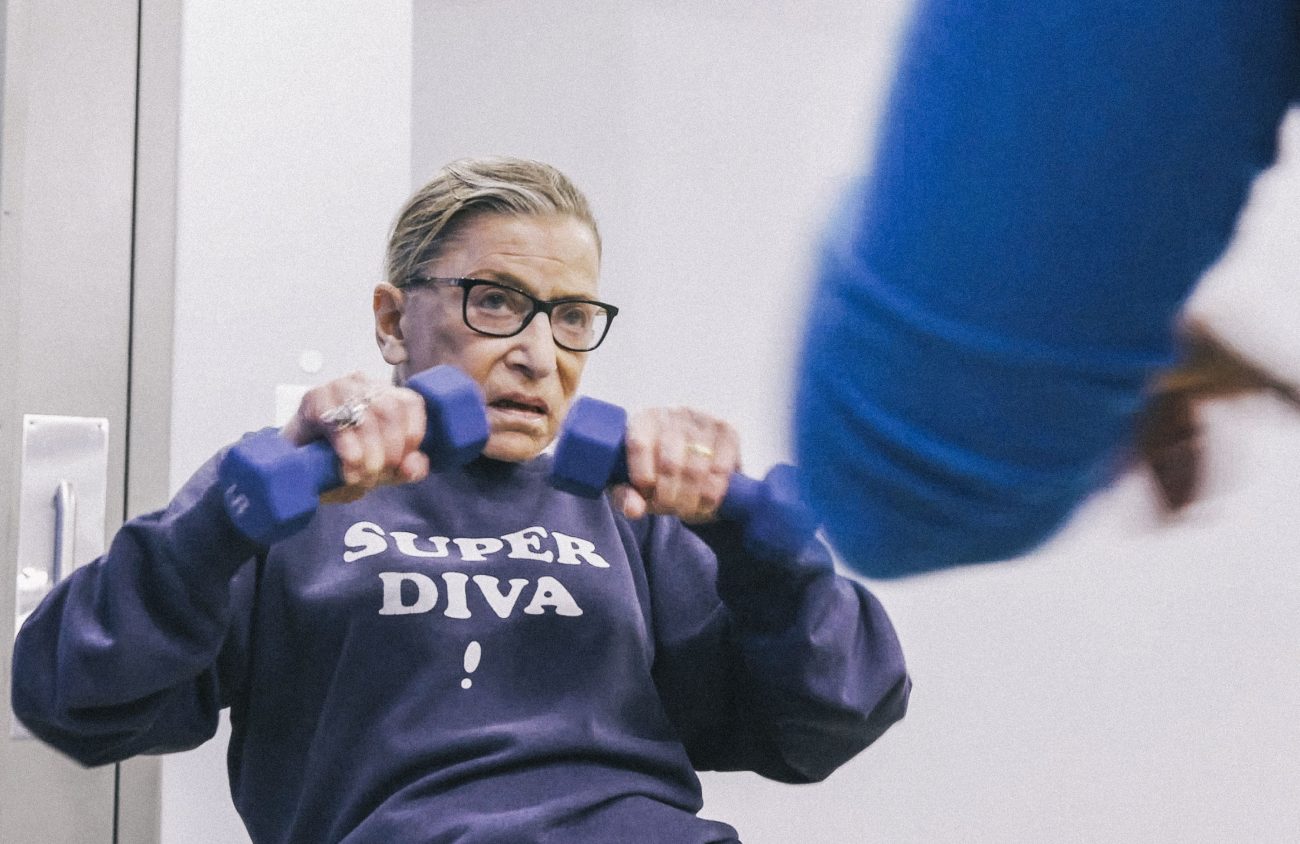If there’s a singular disappointment about the documentary RBG, it’s that it’s a 97-minute movie rather than, say, a five-hour miniseries, the kind of television event I distantly remember from childhood. Maybe at that length, there’d be enough time to really dig into Supreme Court Justice Ruth Bader Ginsburg’s story — and it could be an event everyone watches, and everyone talks about.
That would be fitting, because it feels like we’ve all been talking about Ginsburg for the past few years without knowing as much as we could about the person we were talking about. Maybe some of you did; for my part, I knew of her recent dissenting opinions, that she was a force for change and that her face (with lace collar, of course) was on a zillion coffee mugs, pins, T-shirts, even tattoos.
Betsy West and Julie Cohen’s RBG is an excellent starting point for filling in Ginsburg’s history, an outline for beginning to understand the work Ginsburg has done over her long and storied career. Cleverly, the documentary often borrows its structure from Ginsburg’s own words at her 1993 Supreme Court confirmation hearings: The filmmakers show us Ginsburg telling a brief part of her history, then they dive into that segment in greater depth.
This gives the apt impression that Ginsburg is at the wheel the whole time. From law school to academia to the Supreme Court, RBG shows Ginsburg quietly, steadily breaking ground, whether as one of nine women in a law school class at Harvard or as the arguer of cases that steadily set new precedents for equality.
West and Cohen carefully pick lines from some of the landmark cases Ginsburg has won and opinions she’s written; if giving us the words on screen as Ginsburg speaks them is a bit repetitive, listening to her firm voice responding to snide questions from men is both infuriating and oddly enjoyable. (She describes feeling like a kindergarten teacher, dealing with men who simply didn’t understand discrimination.)
The filmmakers’ interviewee choices clearly illustrate that this is a personal as well as a professional history: The talking heads are as often family or friends as they are famous folks like Gloria Steinem or Nina Totenberg.
Each snippet of history is distilled to its essence: in less than two hours, RBG goes from Ginsburg’s childhood to her current iconic status, stopping to note the sexism she faced, to emphasize the support her husband provided and to mention, repeatedly, how late into the night she works.
Ginsburg herself is quiet, almost retiring — her late husband, her staunchest supporter, gets many of the movie’s laughs — but her immense strength is clear in both her opinions and her influence.
RBG is unabashedly a celebration, if one that — like its subject — rarely slows down to bask. The movie’s focus is Ginsburg; and Ginsburg’s focus is the work, and the best way to get the work done. It’s this aspect that makes RBG such compelling viewing. Stories of people this perfectly matched to their work are few, far between, and vital.
We can’t all be Supreme Court justices, but we can keep working for change, no matter how incremental. (Bijou Art Cinemas)
